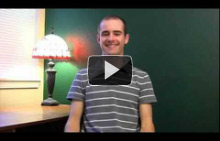Biography of Curtis Emerson LeMay
Bith Date: November 15, 1906
Death Date: October 1, 1990
Place of Birth: Columbus, Ohio, United States
Nationality: American
Gender: Male
Occupations: air force officer, politician
Curtis Emerson LeMay (1906-1990) was one of the outstanding combat leaders of World War II who helped lead the strategic bombing of Japan and Germany, built the Strategic Air Command, and was Air Force chief of staff from 1961 to 1965.
Curtis LeMay's life and career epitomize the growth and development of U.S. military forces as America moved from isolationism in the 1930s to superpower status today. He was born in Columbus, Ohio, on November 15, 1906. LeMay worked his way through Ohio State University. In 1928 he was commissioned without completing his degree, which he completed later.
In the 1930s, LeMay helped develop the ideas and equipment America used in World War II. He participated in the Army's support of the Civilian Conservation Corps; he helped fly the mail when Franklin D. Roosevelt ordered the Air Corps to deliver it; and he was one of the pioneers of aerial navigation. He was the B-17 navigator who in 1937 found the battleship Utah and in 1938 found the Italian liner Rex in demonstrations of the ability of aircraft to find ships. These exercises were important in the battle to build the Air Corps as well as in the evolution of the science of aerial navigation.
In 1936 LeMay had moved from fighters to bombers, because he saw the future of military aviation in bombers--the aircraft that could take the offensive and carry the battle to the enemy. Shortly after becoming a bomber pilot he met Robert Olds. Olds taught LeMay two important lessons: first, that the peacetime Air Corps existed only to be ready to fight when and where the elected representatives of the American people directed; and second, that readiness required constant training. LeMay later built these lessons into the Strategic Air Command.
In the hectic days of early 1943, while preparing the 305th Bomber Group in California for the European war, LeMay allowed the members of the group, including himself, to take only every other weekend off and thus earned for life the nickname of "Iron Ass." While leading the 305th to Europe, and still training hard, LeMay was struck by Bell's Palsy, leaving his face frozen for life. This frozen face and his no-nonsense attitude about combat readiness gave him an undeserved reputation for cold-bloodedness and indifference to subordinates' problems.
In the summer of 1944 LeMay moved from B-17 operations against Germany to B-29 operations against Japan. That August he took command in India of B-29s which refueled in China for missions against Japan. LeMay reorganized the command's training, maintenance, and operations, but the logistics arrangements were impossible and ensured that the India-based B-29s' contribution to the American war effort was merely a token.
On January 18, 1945, LeMay left India and moved to Guam to command B-29s operating from the Marianna Islands against Japan. Once again LeMay reorganized an outfit, exercising his leadership and teaching his techniques and doctrines. The weather over Japan kept the precision bombing doctrines used in Europe from producing comparable results. LeMay, without telling his superiors and in the face of his flyers' concerns about their losses, started low level firebombing of Japanese cities. These tactics destroyed the Japanese urban areas and, in LeMay's opinion, made possible the surrender of Japan without an invasion after the dropping of the atomic bomb. In a 1985 interview with the Omaha World Herald he said that at the time he believed his firebombing had been so successful that Japan would probably have collapsed without the use of the bomb, but stated he went along with President Truman's decision to do so because of the President's authority.
Lemay did not see the use of atomic weapons instead of conventional weapons as a moral issue. For him the moral issue was, and remained, how to win with the least possible American casualties. LeMay believed that the use of too little force would needlessly prolong the war and thus produce more casualties than would have been caused by overwhelming force initially.
After the defeat of Japan in 1945, LeMay played a central role in the development of the United States Air Force (USAF). He first moved to the Pentagon and guided the creation of the Air Force's research and development organization. In 1947 he became the commander of the USAF units involved in the occupation of Germany and in 1948 started the USAF efforts in the Berlin Airlift.
That same year, as the Cold War developed, he became commander of the Strategic Air Command (SAC). LeMay served in that position until 1957. In SAC he gave the United States one of its most important military instruments to implement the national policies of containment and deterrence. Determined that if war came again American forces would be prepared, LeMay stressed realistic training and made SAC aircrews as combat ready as possible. Simultaneously he worked hard to provide for his peoples' needs. Under LeMay SAC became one of the elite military forces of the world.
From SAC he went on to duty as vice chief of staff of the Air Force and then as chief of staff from 1961 until 1965. As chief of staff LeMay participated in the Cuban missile crisis and the early stages of the Vietnam War. In both cases he argued for strong military action but loyally executed the strategy selected by his civilian superiors.
When LeMay retired he had served as a four star general longer than anyone else in American history (1951-1965). He continued to serve his country in a variety of ways. He was active as an adviser to the Air Force, ran as the third party vice-presidential candidate with George Wallace in 1968, and served as one of the directors of the National Geographic Society. While running with Wallace on the American Independent Party ticket, LeMay caused controversy by indicating he would support the use of nuclear weapons to end the war taking place in Vietnam.
In his last years, LeMay kept out of the public eye. He died at an Air Force hospital in Riverside, California on October 1, 1990.
Associated Organizations
Associated Events
World War II, 1939-1945Further Reading
- Iron Eagle: The Turbulent Life of General Curtis LeMay (1986) by Thomas M. Coffey is the only full biography of LeMay. His autobiography, written with MacKinlay Cantor, is Mission with LeMay: My Story (1965). His role in the history of the U.S. Air Force is documented in Robert Frank Futrell, Ideas, Concepts, Doctrine: A History of Basic Thinking in the United States Air Force, 1907-1964 (1971). Dewit W. Copp's Forged in Fire, Strategy and Decisions in the Air War Over Europe, 1940-45 (1982) covers the World War II years in Europe. LeMay's importance in the air campaign against Japan is covered in Haywood S. Hansel Jr.'s Strategic Air War Against Japan (1980) and in The Army Air Forces in World War II, Volume 5. For more information, see The Pacific: Matterhorn to Nagasaki, June 1944 to August 1945 (1953), edited by Wesly F. Craven and James L. Cate. Harry R. Borowski, in A Hollow Threat, Strategic Air Power and Containment Before Korea (1982), explains LeMay's role as the architect of SAC. The 1985 interview with the Omaha World Herald is mentioned in LeMay's obituary in the October 2nd edition of New York Times.




